Mastering Blood Sugar Balance!
Heather Machie BSN, RN
6/27/202412 min read


The significance of maintaining healthy blood sugar levels
Maintaining healthy blood sugar levels can help prevent heart, kidney, foot, and eye issues. Hyperglycemia has been shown to increase cardiovascular complications and problems with kidneys, feet, and eyes (1) (2). It is also noted to reduce the immune response, increasing the risk of infection.
In addition to hyperglycemia, hypoglycemia, or low blood sugar, can occur. This can lead to lightheadedness, confusion, or loss of consciousness. The body gains its largest energy supplier by taking in enough good sources of sugar.
By maintaining a happy medium with your blood sugar level, you can avoid critically low and critically high blood sugar levels.
The prevalence and health implications of high blood sugar
Unfortunately, high blood sugar is an issue for many. Approximately 537 million people live with diabetes, and this figure is rising (3).
Consistently high blood sugar can most commonly lead to diabetes mellitus, a chronic illness that affects the body’s ability to control the sugar in the blood. High blood sugar is common among those with diabetes and often causes multiple issues within the body. It can harm blood vessels and nerves, especially in the hands and feet.
Natural approaches for blood sugar management at home
It requires:
Meal planning for proper nutrition
Regular and consistent exercise
Managing stress
Collaborating with healthcare professionals
What is blood sugar, and what is its role in the body?
Blood glucose, otherwise known as blood sugar, is what your body uses as energy. It is sugar that is found in your blood. When we eat, our bodies digest food into usable sugar. That sugar gets sent through the blood.
When the pancreas, an organ in our body, senses blood sugar levels rising, it releases a hormone called insulin. This hormone then regulates glucose and leads it into your body’s cells, where it becomes energy. This process is what powers our body. Without sugar, our body’s cells struggle to function (4).
Normal blood sugar levels and hyperglycemia
Blood sugar levels vary. Sometimes, blood sugar levels are obtained after you have fasted or not eaten. This allows an accurate representation of your body’s blood sugar naturally. When fasting, an average blood sugar level is 70 mg/dl to 99 mg/dl. Fasting blood sugar levels from 100 mg/dl to 125 mg/dl are typically categorized as prediabetic.
Someone who relies on insulin will usually check their blood sugar before eating to understand how much insulin they must take so that their body can break down sugar properly. For example, before someone eats dinner, they may prick their finger and test their blood. An average value during this time would be 65 mg/dl to 125 mg/dl. Lower or higher can mean your blood sugar is too low or too high.
Numbers aren’t the only way you can identify that you have high blood sugar. People who are experiencing high blood sugar usually (4):
Have extreme thirst: High blood sugar can cause you to drink bottle after bottle of water yet never feel truly satisfied.
Pee a lot: Because high blood sugar can cause extreme thirst, many constantly drink water to quench their thirst. This often leads to excessive urination.
Feel weak: Insulin is like fuel, helping move sugar into our cells. When we lack this fuel, we feel weak. (5)
Have blurry vision: High blood sugar can cause significant damage to blood vessels. This is especially true with blood vessels in the retina, a part of your eye.
Many things can cause high blood sugar. Overeating food, illness, stress, dehydration, and even menstruation can spike blood sugar. When you eat food with too many carbohydrates, your body may become overwhelmed and unable to produce enough insulin. During illness, your body pushes out hormones and other tactics to fight infection, which can cause high blood sugar. (6)
The impact of uncontrolled blood sugar on overall health
The effects of high blood sugar don’t stop with the blood or a high reading. It can affect your entire body, especially when treated incorrectly. Because high blood sugar affects blood vessels, it can effectively harm your whole body since blood vessels are an intricate part of every one of our organs. Damage to blood vessels, especially over time, can cause organ dysfunction. High blood sugar primarily affects the eyes, kidneys, heart, and nerves.
Sometimes, high blood sugar can cause significant nerve damage to the feet. This can lead to numbness and tingling of the feet, making it hard to walk steadily. Often, those with nerve damage find themselves falling or with wounds on their feet since they cannot feel them well enough to walk safely or if they are stepping on something sharp.
Beyond nerve damage, high blood sugar can cause significant damage to the kidneys and heart. On a micro level, high blood sugar harms blood vessels, which are directly related to the functioning of the entire body–especially the heart and kidneys. Many with high blood sugar also experience hypertension or high blood pressure. Together, these two issues cause a myriad of symptoms (7).
Nutrition Strategies for Blood Sugar Management
The importance of a balanced diet in controlling blood sugar levels
Sugar is essential to our body’s functioning. This means controlling your blood sugar isn’t as simple as cutting out all sugar. You must learn how to manage your nutrition in a way that helps your body break down sugars more effectively.
One way to do this is to incorporate fiber-rich foods into your diet. Fruits and vegetables are significant sources of fiber and are considered good carbs. Whole grains are also good sources of fiber. Fiber helps control blood sugar by slowing how quickly glucose gets into the blood, allowing your body enough time to make the insulin it needs and avoid high blood sugars (8).
Prioritizing complex carbohydrates over simple sugars
Carbohydrates are either simple carbohydrates or complex carbohydrates. Simple carbohydrates, or simple sugars, don’t provide much nutritious value. Like their name, they are simply sugar. Complex carbs offer more for your body. They include glucose but have other healthy properties that help the body break down sugars. That’s why it is essential to prioritize incorporating complex carbohydrates into your diet.
Some examples of complex carbohydrates are (9)
Bread
Legumes
beans
Rice
Pasta
Starch vegetables
Corn
Peas
Potatoes
Squash
Including lean proteins and healthy fats to stabilize blood sugar
Fiber isn’t the only thing that helps the body control blood sugar. Lean proteins are also beneficial in stabilizing blood sugar. Studies have shown that eating meals with lean protein like low-fat beef, chicken, or fish can strengthen the response to blood sugar rising with a meal.
Adding lean protein to your meal helps your body dispatch insulin more effectively. That way, your blood sugar rises only at an average pace and doesn’t rise to dangerous levels (10)
Foods that may help regulate blood sugar
Clinical trials have shown that cinnamon can help improve blood glucose. These doses ranged from 330 mg to 500 mg daily. It has also shown that it can help prevent insulin resistance, which is essentially when your body fights against the effects of insulin, lowering its efficacy (11). Some studies have shown that taking cinnamon after a meal can help your body control blood sugar (12).
In addition to cinnamon, chromium, which can be found in broccoli, green beans, and whole grains (13), has also had promising results in reducing insulin resistance. It has been shown to aid in metabolizing proteins, complex carbohydrates, and other fats, which helps control blood sugar.
Meal planning techniques to support blood sugar balance throughout the day
Two major meal techniques have shown success with blood sugar management: carbohydrate counting and the plate method.
Carbohydrate counting is precisely as the name suggests. It entails counting the carbohydrates in the food you eat. Carbohydrates are the nutrients that have the biggest effect on blood sugar. This method can be more complicated to learn and often leads people to choose an alternate meal-planning method.
The plate method is the simplest of the two choices. When using it, you fill half your plate with non-starchy vegetables. The other half you split in two–one part for lean protein and the other with healthy complex carbohydrates. The plate method reinforces the importance of portion sizes to help control blood sugar (7).
Physical Activity and Blood Sugar Regulation
Many studies have shown that aerobic exercise positively affects blood sugar control. Some experts recommend aerobic exercise like walking before breakfast, which can substantially decrease post-meal blood sugar (14). Further, regular aerobic exercise can help prevent weight gain, another instigator of high blood sugar (15).
Strength training to increase muscle mass and enhance glucose metabolism
It is a well-known fact that exercise has many benefits. In terms of blood glucose metabolism, strength training is a heavy hitter. Muscles use glucose as energy, so if you participate in strength training, your glucose use is kicked into hyperdrive. This allows glucose levels in the blood to decrease.
A study showed that those who completed a strength training regimen for nine months decreased their hemoglobin A1C levels (a test that measures blood glucose levels over a 2-3 month span) substantially versus the control group who did not complete strength training (16).
The importance of consistency and finding enjoyable activities to maintain an active lifestyle
Exercising once in a while isn’t a bad thing, but it doesn’t do much in terms of improving your overall health. The common phrase, consistency is key, isn’t wrong.
It can be difficult to find physical activities that you enjoy doing. Often, exercise is viewed as a chore. To combat this, be creative with ideas to get exercise. You don’t have to go to the gym for beneficial physical activity; you can play frisbee with your dog, walk along a beach at sunset, or go on scenic bike rides. You’ll have the most success if you find a way to connect your hobbies with physical activity.
The benefits of post-meal walks or light exercise for managing blood sugar spikes
After eating, our blood sugar rises. We have just ingested food; now it is time for our body to release its natural insulin.
Light exercise 15-30 minutes after eating helps your body’s metabolism kick up a notch and work on processing the glucose in your blood. Studies have shown that light aerobic exercise after a meal improves the body’s glucose management (17).
After a family dinner, go for a walk in the neighborhood. It can help your body process glucose more efficiently and keep your blood sugar under control.
Examining the link between stress and blood sugar levels
Chronic stress has been shown to cause increased insulin resistance. Stress instigates epinephrine and norepinephrine, two culprits in decreasing glucose tolerance (18).
Through an emotional lens, stress can cause overeating, lack of exercise, or poor sleep habits, significantly affecting blood sugar control.
Relaxation techniques such as deep breathing, meditation, and yoga
Practicing mindfulness can help manage in-the-moment stress. Deep breathing can help your body regulate its stress/fight or flight response. Yoga doubles as physical activity and stress management.
Deep breathing is a simple yet effective stress management tactic. One way to deep breathe effectively is to count your inhales, hold your breath, and exhale. For example, you inhale for five seconds, hold your breath for five seconds, then exhale for five seconds. Repeat this until you feel more relaxed.
Yoga practice involves managing your breathing in the same way. By engaging in meditation or yoga, you can help keep your stress manageable and control your blood sugar effectively.
The importance of adequate sleep in stress reduction and blood sugar regulation
Not getting enough sleep causes sympathetic overstimulation and hormonal imbalance. Lack of sleep can also increase cravings for sweet foods. Poor sleep quantity or quality has been shown to affect emotional health as well. This can lead to increased negative emotions and push the body into a stress state, which often causes the body’s glucose levels to spike (19). Sleeping for more than six hours is imperative for blood sugar control. Those hours must be restful ones to be beneficial to the body.
Monitoring and Tracking Blood Sugar Levels
It is easier to know that your blood sugar is regulated with tracking. If you are altering your blood sugar management routine, you must check your blood sugar regularly. This helps prevent instances of hyperglycemia or hypoglycemia. It also lets you understand if the tactics you use to control your blood sugar are working.
If you are not a diabetic, checking your blood sugar doesn’t have to be a daily thing. Most non-diabetics check their blood sugar at their annual physical, and their doctors agree that if you don’t have diabetes, this is enough.
Selecting and using blood glucose meters
There are two types of blood sugar monitors:
Blood glucose monitor: You use these when you prick your finger for a drop of blood.
Continuous Glucose Monitor (CGM): These monitors constantly read blood sugar values. They are implanted under the skin. Some apps often coincide with CGMs enabled by Bluetooth, giving you real-time blood sugar readings.
You must be diagnosed with diabetes to receive a continuous glucose monitor (CGM). Blood glucose monitors are the most common way to monitor blood sugar. CGMs are often considered to improve quality of life and ensure accuracy in insulin dosing.
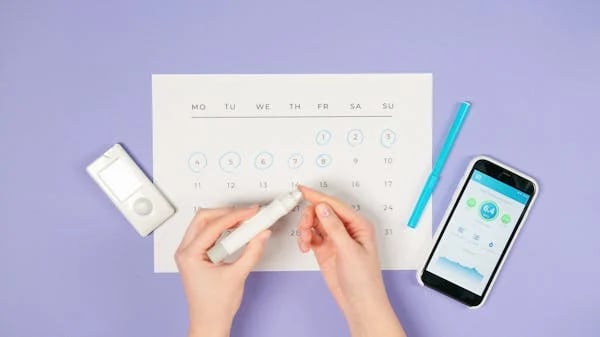

Bottom Line
Implement natural methods for blood sugar management at home
By implementing natural blood sugar management techniques, you may be able to prevent diabetes. There are many ways to do this, such as managing your stress, engaging in regular exercise, and eating lower-sugar, higher-protein foods.
There is even support for herbal remedies like cinnamon and fenugreek. It’s not always possible to avoid needing medication or insulin, but by using these techniques, you may decrease the chances of ever needing them.
The importance of lifestyle modifications, monitoring, and seeking professional guidance when needed
It’s important to understand that there are multiple pieces to the puzzle of blood sugar management. It requires more than just occasional exercise or medication. To control your blood sugar effectively, you must undertake a comprehensive approach that includes a healthy diet, regular exercise, and consultation with your healthcare provider.


Keeping a blood sugar log and tracking trends over time
Our memories don’t always work as well as we’d like them to. This is why keeping a log of your blood sugar readings is necessary. Here are some simple ways to track your blood sugar:
In a notebook: If you’re old-school, jotting your blood sugar readings in a small notebook can be helpful. After you take your blood sugar, take note of the number and write it in your notebook. Be sure to write the date and time of when you took the blood sugar.
In your phone: Nowadays, people are glued to their phones. If you are someone who relies heavily on your phone, this way of tracking your blood sugar is your best bet! Open up your preferred note-taking app and enter your blood sugar readings. Again, be sure to record the date and time that you took each blood sugar.
In an app: On the same coin as the note-taking app, you can find your phone's blood sugar tracking app. These do a lot of the work regarding journaling the date and time. In some apps, you can even record your daily food journal. Blood sugar tracking apps like My Fitness Pal can be found in your preferred App Store!
Consultation with Healthcare Professionals
Keeping a balanced blood sugar is essential to overall health. Not keeping your blood sugar in check can have some severe consequences. Therefore, you must work with a qualified healthcare provider to approach blood sugar management safely and effectively.
By doing this, you can be sure you are doing your best to prevent hyperglycemia or hypoglycemia. Healthcare providers can guide you on diet modifications, medication interactions, and other needs.


When medication or insulin therapy may be necessary for blood sugar management
Despite your best efforts, you may still require medication or insulin to manage your blood sugar.
Here are some signs you may need to escalate your blood sugar management:
High blood sugar readings: If your blood sugar readings are consistently above 130-140 mg/dl despite diet modification.
High hemoglobin A1C level: If your H1C levels are 5.7 or higher.
Collaborating with healthcare professionals
Working with healthcare professionals can help you structure your blood sugar control. Discussing your concerns regarding blood sugar with your provider can help open doors to other available resources.
Endocrinologists: These are doctors who specialize in hormone-related diagnoses. They are exceptionally knowledgeable about diabetes and blood sugar management. Your primary care doctor may refer you to one only if you need it or have more complex needs. Most primary care doctors can manage your blood sugar independently.
Dietitian: Since the sugar we ingest comes from food, having a dietitian on board can elevate your blood sugar management. Dietitians can work with you to create personalized diet plans and help you recognize what foods to eat and avoid.
Therapist: Stress can significantly affect blood sugar. If your life is stressful and you’re feeling the heat, a therapist can help you manage your stress.
Case manager: Managing your blood sugar can sometimes entail many moving parts. A case manager can help coordinate the care you need while educating you.

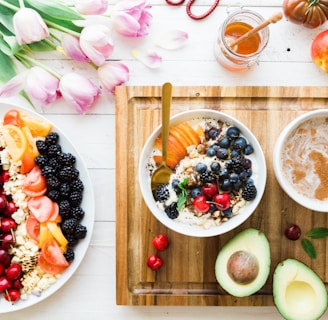
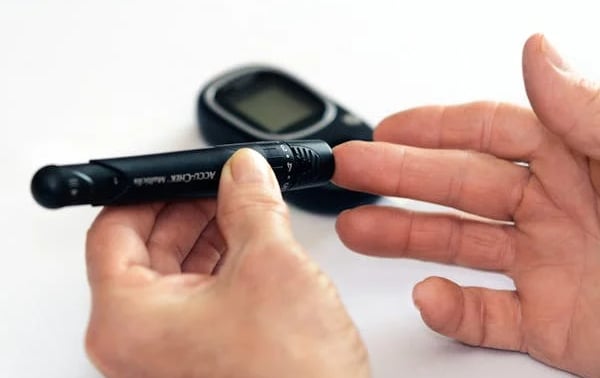


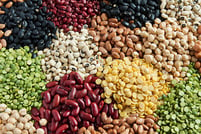






Herbal Remedies and Supplements
Quite a few herbs and supplements have shown to have blood sugar-lowering effects, particularly:
Aniseed
Clove
Cumin
Dill
Fenugreek
Ginger
Turmeric
Research has shown that some of these herbs and supplements have antioxidant, antimicrobial, and anti-inflammatory abilities that help regulate blood sugar and prevent insulin resistance(18)(19).
Precautions and considerations when using herbal remedies and supplements
It is important to remember that when taking supplements or herbs to lower or regulate your blood sugar, you must be cautious. Dropping your blood sugar too low can result in critical hypoglycemia, which is an emergency. Herbs and supplements may also interact with any other prescription medications you take. It is important to discuss the herbs you are using for blood sugar management with your doctor.
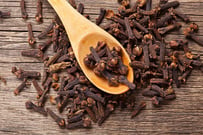







© 2025 Salo Content Writing LLC, all rights reserved
Join the Movement for a Healthier Planet! 🌿
Subscribe now and get your FREE Sustainable Living Checklist! Plus, enjoy weekly articles and delicious plant-based recipes straight to your inbox. Let’s make sustainable living simple and inspiring, one email at a time! 💚✨
